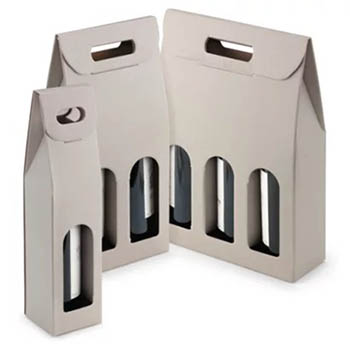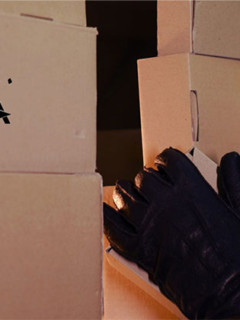Anyone who transports cargo must secure it. This is prescribed by common sense as well as by law. Nobody wants the goods to be damaged during transport – and nobody wants them to cause damage. But that is exactly what happens on German roads. Every day. Several times. These are the aspects you have to consider when securing your load and these are the methods for securing loads:
Wrong. If the vehicle sets itself in motion, changes its speed or direction of travel, or has to overcome bumps, dynamic forces are generated. How the load behaves under such forces depends on:
- the intensity of the change of direction or
- the intensity of acceleration or braking,
- the materials or the surface condition of the load and
- the contact surface and the centre of gravity of the load.
The only way to avoid all risks: Properly securing the load. And in such a way that, in case of doubt, it can survive an emergency braking manoeuvre undamaged. We give you 10 practical tips for securing loads in trucks and vans.
Point 1: Suitable vehicle as a prerequisite for load securing
The truck or vehicle must be able to safely take the load and the expected forces (road conditions and the possibility of emergency braking included). Sounds banal. Nevertheless, a lot is often unnecessarily risked here (even in professional) transports.Make sure that the loading area is clean. Dirt has an influence on friction - see point 2.
Load securing at the LWK – Who checks it?
During inspections, theroad inspection service and the motorway police check, in addition to other points (driving licence, tachograph, …), in particular the proper condition of the vehicle and compliance with the regulations. During these checks, the complaint rate is between 30 and 40 percent! A frightening value. Because, in addition to financial and criminal consequences for drivers and vehicle owners, this also means delays, costs and..: The danger is always with you!
According to the German Road Traffic Regulations ( StVO ), commercial vehicles (which include: Buses with more than 8 seats, trucks from 7.5 t and trailers with a total weight of more than 10 t) have to undergo safety inspections at regular intervals. The exact intervals depend on the type of vehicle.
In addition, the DGVU (German statutory accident insurance) prescribes an annual inspection for so-called operational safety for fleet vehicles (pool and company vehicles). This includes precisely prescribed inspection points for e.g. the condition of the lighting systems, brakes or tyres, but also load securing . These points are checked:
- Load securing devices (e.g. lashing points)
- Load distribution (e.g. axle loads)
- Load securing
- Securing swap bodies, containers, tipping and skip containers
- Double securing of swap body supports
- Spare wheel storage
- Shut-off devices
- Locking devices
Before setting off, the driver should familiarise himself with the load distribution plan of the respective vehicle. For commercial vehicles, this is usually supplied by the vehicle manufacturer. However, it is also available on request from professional associations and trade associations.
On the web you will find numerous online tools and apps for creating the load distribution plan.
This information forms the basis of a load distribution plan:
- Maximum axle loads in tonnes
- Minimum axle loads in
- Wheelbase of the truck in metres
- Length of loading area in metres
- Distance between front axle and bulkhead in metres
- Distance between front axle and rear axle in metres
- Distance between centre axle (if any) and rear axle in metres
A graphic drawing is then created with this basic data, from which the ideal distribution of the load on the respective loading area can be seen quite easily.
of permissible payloads and axle loads, it must be ensured in terms of the steering safety of the vehicle that a certain front axle load is maintained and must not fall below 20% of the vehicle’s gross vehicle weight.
Point 2: The physics of better load securing!
When transporting loads, these four physical factors in particular have an influence on driving behaviour and load safety:- Acceleration / deceleration / centrifugal force
- Friction
- Weight force
- Load centre of gravity
Acceleration, deceleration and centrifugal forces
When starting off and accelerating, the (unsecured) load slides backwards on the loading area. The acceleration forces that act in absolute terms depend on the weight of the load. Rule of thumb: The heavier an object is (weight force), the greater the forces.
Friction
The condition of the surfaces of both the load and the loading area has a decisive influence on the intensity with which and the direction in which the load starts to move. A surface with high friction absorbs the weight force and “dissipates” it downwards. Anti-slip mats, for example, have this effect. In this way, up to 60% of the weight force can be “diverted”. However, you should not rely on friction alone: weather conditions or contamination by e.g. oils or greases will destroy this effect.Load centre of gravity and stability
A load is stable if the height of its centre of gravity is less than half the width of its base. A low centre of gravity prevents (reduces) the load from breaking out to the side.Securing force or pre-tensioning force
The forces that are expected to arise during transport (i.e. weight force minus friction force) must be countered by at least the same force in order to hold the load in place. This force, which must be applied for securing (for fixing), is called the securing force in the case of form-fit loading (direct lashing), and it is called the pre-tensioning force in the case of force-fit loading (tie-down lashing).Point 4: The method of securing the load
In general, a distinction is made between two methods of load securing: Direct lashing (also called form-fit load securing) and tie-down lashing (also called force-fit load securing). For both, you need one or more tension belts.What is the difference?
Form-fitted load
Form-fit loading means loading flush or without gaps. If there is no empty space, the load cannot start moving. The load is interlocked with each other and with the means of transport. To do this, the load is fixed to the end wall of the loading area and secured with the help of straps. Pallets or dunnage bags are also used as “filling material”.This is done, as described, for example, by filling the loading area without gaps, see illustration:
However, tight-fit loading also includes securing the load in place on the loading area with the aid of lashing equipment, i.e. tension belts or nets.
Common methods for this type of load securing for tight-fit loading are:
- Diagonal lashing
- Diagonal lashing
Diagonal lashing using (at least) four tensioning belts with ratchet, supplemented with anti-slip mats and edge protectors. One lashing means secures each corner of the load. The lashings are tensioned diagonally to the outer edge of the loading area and up to the load.
In addition to lashing straps, increase the stability of form-fit load securing with other aids such as:
- Anti-slip underlays(anti-slip mats)
- Anti-slip timbers
- Wedges
- Loading beams or locking beams
- Stowage pad
Attention with positive locking:
The method of form-fit load securing is popular in logistics, but it is not suitable for every vehicle. The legislator places certain requirements on the vehicle body. The so-called body strength for commercial vehicles and trailers according to DIN EN 12642 requires a minimum load capacity of the front wall, the rear wall and the side walls.If the tight fit is to be created with the aid of lashing straps, appropriate attachment points (lashing points) must be available on the load to be secured.
Force-fit load securing
Force-fitloading, in contrast to form-fit loading, means that the load units are pressed onto the loading area and secured. To do this, the lashing straps are passed over the load and tensioned. The individual packages are thus literally lashed down, the force is thus diverted to the loading surface Movement and slipping or breaking away is prevented. In contrast to the positive-locking variant, the load is free-standing.Point 5: The suitable tensioning strap
An almost immeasurable choice of tensioning or even lashing straps – how do I find the right one? The lashing strap label, which must be attached to every strap (standard EN 12195), shows the relevant criteria.Load securing with the aid of lashing equipment
In addition to the name of the manufacturer, the GS mark and the corresponding test number, the year of manufacture, the DIN standard applied and a unique code number for traceability and allocation of the lashing strap, this information is relevant:- Material of the lashing strap, recognisable by the colour of the label (polyester – blue, polamide – green, polypropylene – brown)
- Useful length of the lashing
- Standard Hand Force (SHF), stated in daN
- Standard Tension Force (STF), given in daN
- Lashing Capacity (permissible lashing force, LC), given in daN
- Elongation under permissible (maximum) lashing force in percent
Here you can find more information about the various specifications of tension belts as well as the information on the label of a tension belt: Load securing with tension belts
More on the "durability" of a lashing strap, on quality testing and on the so-called discard maturity of tensioning and lashing straps: Load securing with tensioning straps.

















